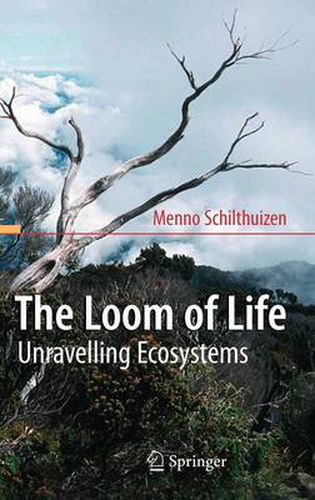Readings Newsletter
Become a Readings Member to make your shopping experience even easier.
Sign in or sign up for free!
You’re not far away from qualifying for FREE standard shipping within Australia
You’ve qualified for FREE standard shipping within Australia
The cart is loading…






This title is printed to order. This book may have been self-published. If so, we cannot guarantee the quality of the content. In the main most books will have gone through the editing process however some may not. We therefore suggest that you be aware of this before ordering this book. If in doubt check either the author or publisher’s details as we are unable to accept any returns unless they are faulty. Please contact us if you have any questions.
In an age of increasing environmental problems, ecology has had to grow up fast from a discipline dealing with relatively simple interactions between species to one that tries to explain changes in global patterns of diversity and richness. The issues are complex. Every species may seem to have its own unique role, but if that is true, then why are there hundreds of species of plankton in an ecosystem with only a handful of niches? The tropics have a high biodiversity, but does anybody know why? And how can a single introduced tree species wreak havoc in Hawaii’s rainforests, when it is one of thousands of quietly coexisting tree species in its native continent, South America? The strength of this book is that it will help digest some of these more complex issues in the ecology of biodiversity. It will do this by zooming out from the local scale to the global scale in a number of steps, marrying community ecology with macroecology, and introducing unexpected nuggets of natural history along the way. The reader will notice that, the larger the scale, the more the familiar niche-concept appears to be overshadowed by exotic fields from fractal and complexity theory. However, scientists differ in opinion on the scale at which niches become irrelevant. These differences of opinion, but also the search for unified ecological theories, will form another force by which the story will be carried along to its conclusion. A conclusion which, surprisingly, seeks to find a glimpse of the globe’s future in the traces from its past.
$9.00 standard shipping within Australia
FREE standard shipping within Australia for orders over $100.00
Express & International shipping calculated at checkout
This title is printed to order. This book may have been self-published. If so, we cannot guarantee the quality of the content. In the main most books will have gone through the editing process however some may not. We therefore suggest that you be aware of this before ordering this book. If in doubt check either the author or publisher’s details as we are unable to accept any returns unless they are faulty. Please contact us if you have any questions.
In an age of increasing environmental problems, ecology has had to grow up fast from a discipline dealing with relatively simple interactions between species to one that tries to explain changes in global patterns of diversity and richness. The issues are complex. Every species may seem to have its own unique role, but if that is true, then why are there hundreds of species of plankton in an ecosystem with only a handful of niches? The tropics have a high biodiversity, but does anybody know why? And how can a single introduced tree species wreak havoc in Hawaii’s rainforests, when it is one of thousands of quietly coexisting tree species in its native continent, South America? The strength of this book is that it will help digest some of these more complex issues in the ecology of biodiversity. It will do this by zooming out from the local scale to the global scale in a number of steps, marrying community ecology with macroecology, and introducing unexpected nuggets of natural history along the way. The reader will notice that, the larger the scale, the more the familiar niche-concept appears to be overshadowed by exotic fields from fractal and complexity theory. However, scientists differ in opinion on the scale at which niches become irrelevant. These differences of opinion, but also the search for unified ecological theories, will form another force by which the story will be carried along to its conclusion. A conclusion which, surprisingly, seeks to find a glimpse of the globe’s future in the traces from its past.